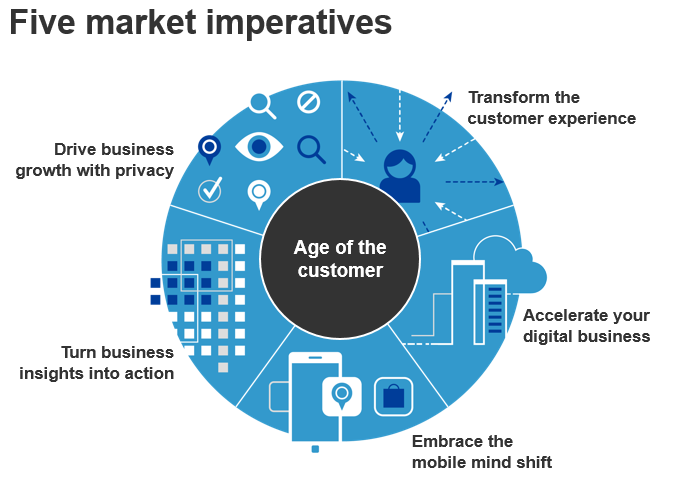Look Who’s Running IT Now!
As CIO Executive Partners at Forrester, we meet technology leaders in almost every industry sector. One theme is clear: The typical career path, leading to CIO has changed.
No patience for CIOs to learn new tricks.
Companies are now looking to leadership from non-traditional CIO career path sources. Over the past few years, we've noticed an increase in line-of-business leaders being appointed CIO. Within the past 12 to 18 months we've also seen Digital channel / eCommerce experts, being appointed the overall CIO.
Why are Executives turning to new sources for their CIOs?
For a few decades now, tech leaders have been focused on running a stable, secure, predictable and efficient technology platform. Everyone expects you to get the "table stakes" right. That is no longer enough to keep your position in the company secure.
Back in November 2015, Forrester Analysts Nigel Fenwick and Pascal Matzke summarized the perspectives of the CIO research practice in a Predictions 2016 report: "The New Breed of CIO." In the report they claim that in 2016, CEOs will expect CIOs to grow out of being mere custodians of technology and to actively wield tech to drive revenue instead. They go on to state that, "Effective CIOs will spread outside-in thinking, agile delivery and a sense-and-respond culture to deliver digital success."
Not only is this prediction today's reality, CEOs are making quick assessments as to whether or not they have the right team to achieve results. If they perceive they don't, they are looking to new sources for their Tech Leadership.
The new CIO career path.
Today, the path to becoming a CIO is increasingly through alternative career steps. Some who've never had CIO aspirations.
- Line-of-business leaders. If the organization wants someone to drive business innovation and instantly have credibility with the C-suite and Board, tapping someone on the shoulder who already has that credibility can be a good choice. The theory being, you can teach them the technology management disciplines faster than it might take to build trust at the Executive table. It also can be part of a succession planning strategy for the top C-suite positions, allowing leaders to experience all critical functions both front-line and back-office. Example: Lee Hobbs, CIO at TransCanada Corporation, was an SVP + GM of a major business unit with no direct IT background. He became the CIO and added his business acumen to running IT and was already a critical member of the Executive Team.
- eComm or digital channel leaders. The trend of CIO coming from the Digital channel roles, are primarily in Retail or other industries where omnichannel, digital delivery services are seen as a core differentiator. In this scenario, it seems quicker or easier for the Digital expert to learn the traditional IT, rather than evolve the traditional CIO to the Digital channel world. Examples: Paul Chapman, CIO of Gap Inc. / GapTech moved from the eCommerce division to now run all of IT. Greg Adams, Chief Digital Officer at Best Western International, now has all of IT reporting to him, although he's maintained his CDO title.
Do companies still appoint a CIO?
A small number of companies aren't appointing CIOs at all. Perhaps because to some, the title may signify an older style of leadership and rather than work on changing the perceptions of the past, they are rebranding, simply as an EVP or Group Head of Technology. Example: A multinational Bank does not have a title of CIO.
What should today's CIOs do to survive these changes?
So what do you do if you've been in your CIO role for a while and you sense things are changing or perhaps you see the need to drive change in your company?
- Put the customer at the forefront of everything you do. As the "Predictions 2016: The New Breed of CIO" report states, CIOs who get Customer Experience (and Employee Experience) are the heroes of digital transformation – while others watch. Great CIOs reshape their teams for continuous change.
- Develop strategies to address the Six Levers of the Customer Obsessed Operating Model (clients, see the "The Operating Model for Customer Obsession" report). Forrester has a number of published and upcoming reports focused on this model.
- Have a strategy for all five Forrester market imperatives. Ensure know you where you are today, across the enterprise and develop appropriate levels of investment for each imperative. Ensure your strategies are tied to business outcomes.

Additional Resources:
Predictions 2016: Welcome To The Digital Savvy, Customer Obsessed CIO – Blog Post